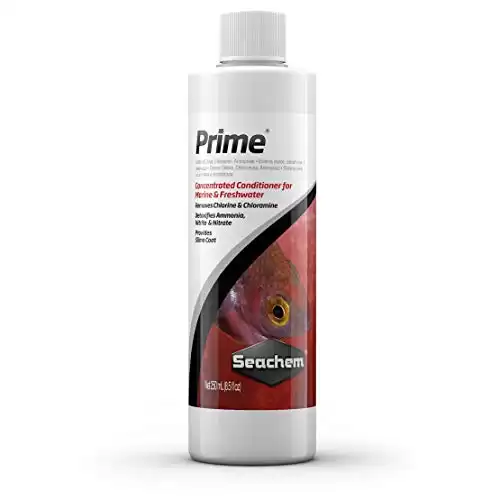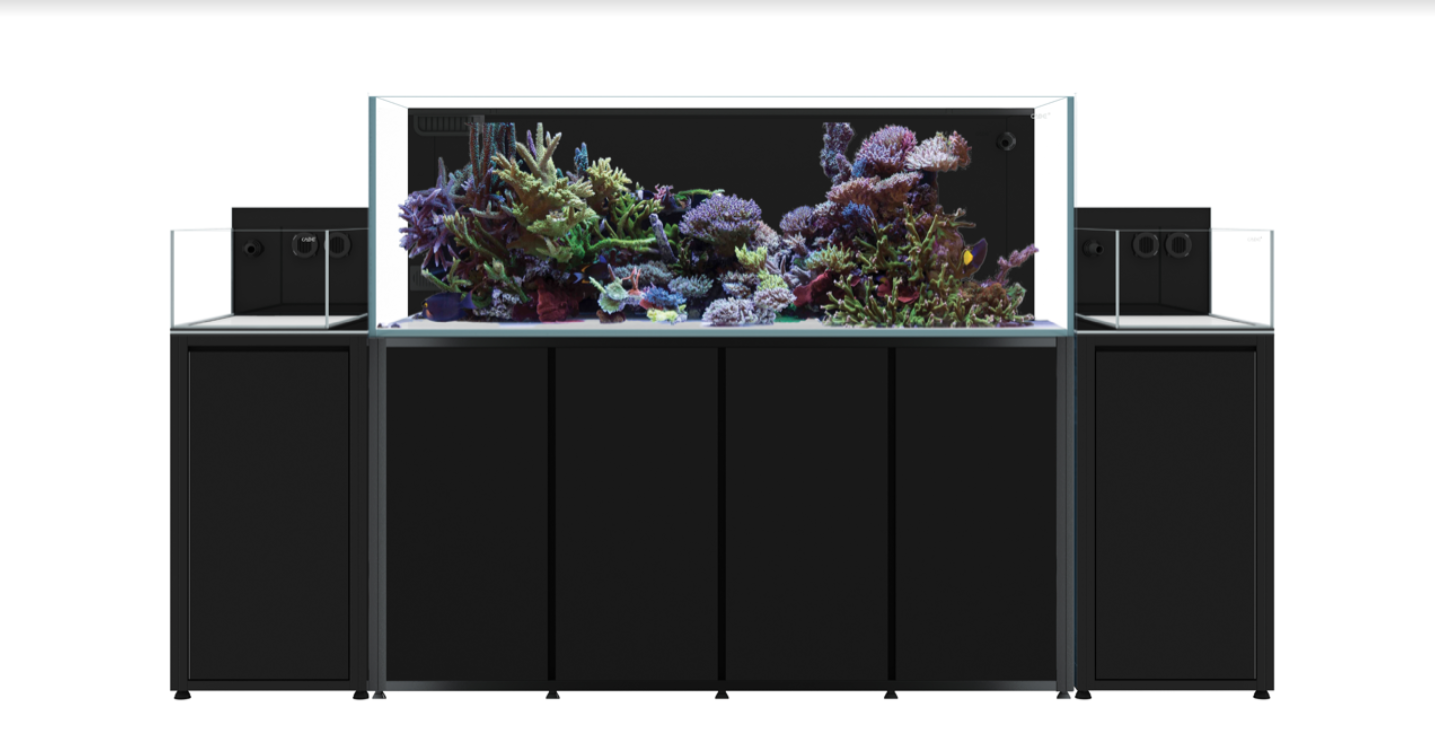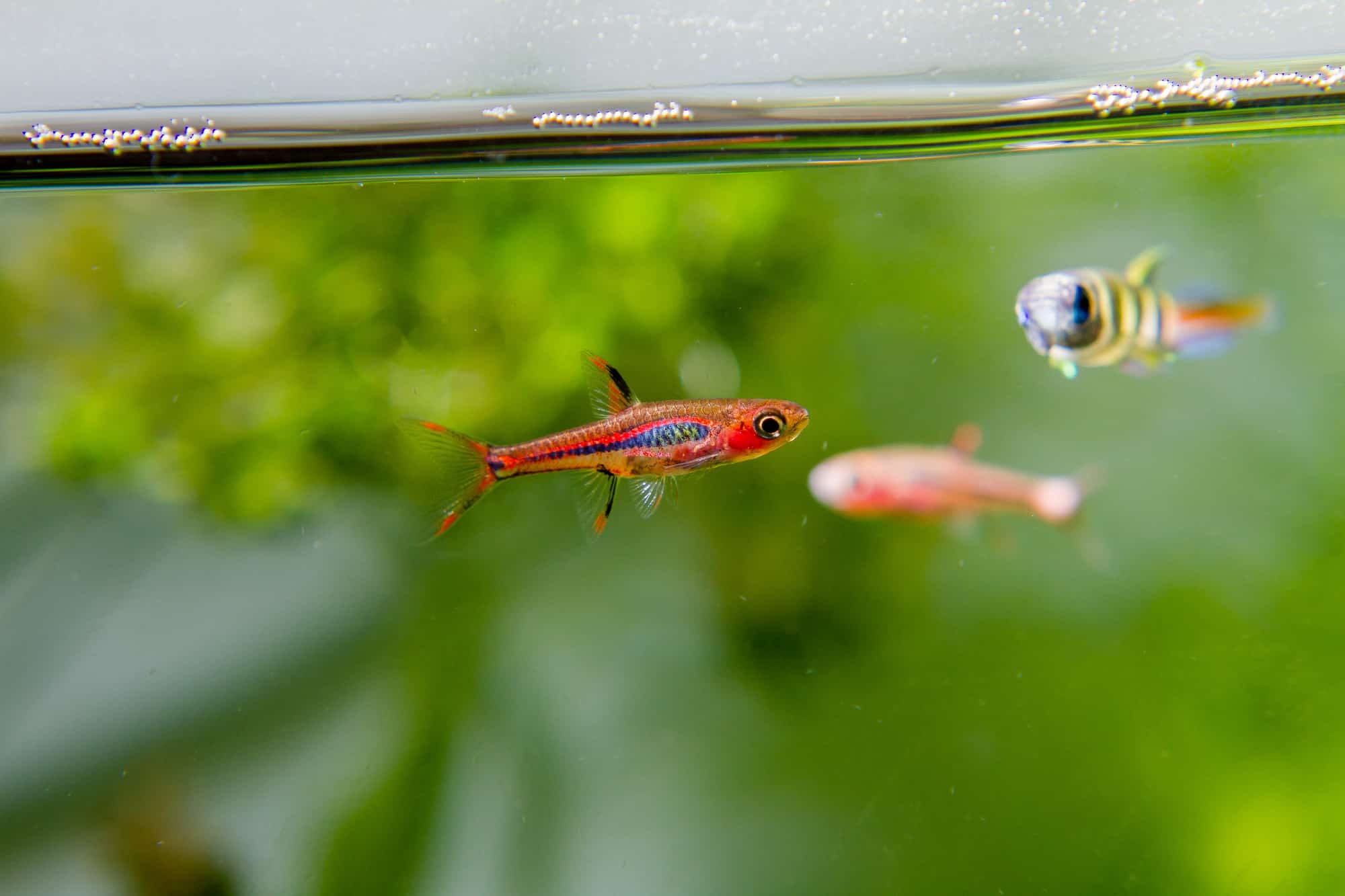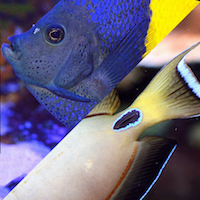There’s been a growing interest in unusual crustaceans in recent years, and, unfortunately, this sometimes results in new species being kept in inappropriate conditions.
Sadly, there’s been much misinformation about how to keep purple Thai devil crabs, and these terrestrial crabs are sometimes even seen immersed in water in pet stores.
In this article, I’ll offer the most up-to-date information on keeping purple devils – a species that would naturally rarely enter water in its adult life!
Thai Devil Crab at a Glance
| Purple Thai Devil Crab Info | |
|---|---|
| Scientific Name | Cardisoma carnifex |
| Synonyms | Cancer carnifex (Herbst, 1794) Cardisoma obesum (Dana, 1851) Cardisoma urvillei (H. Milne-Edwards, 1853) |
| Other Names | Soapbox crab, Black devil crabs, Purple Thai devil crab, Brown land crab |
| Minimum Tank Size | 20 gallons |
| Ease of Keeping | Difficult |
| Breeding | Very Difficult |
| Size | 3 – 5 inches Carapace |
| Optimal Temperature | (70-81°F) |
| Humidity | 60% and higher |
| Diet | Mostly herbivore/omnivore |
| Temperament | Aggressive |
| Life span | 5-8 years |
Species Overview
The Thai devil crab is a relatively new addition to the pet trade and as such, much misinformation surrounds their care.
If you’ve seen videos on the internet of these crabs submerged in regular aquariums, you’ve witnessed them being mistreated!
As a family of land crabs, Thai devils regularly live several miles inland in their wild habitats. They only require enough water to drink and a relatively humid environment to be able to breathe properly.
As such, Thai devil crabs are not an aquarium species and are only to be kept in terrariums (dry tanks) or paludariums (tanks with both land and water).
Origin and Background
Also known as brown land crabs and soap box crabs, Cardisoma carnifex has a large native range. The species can be found from the Red Sea and East Africa, through the Indian Ocean to Southern Japan and the Pacific Coast of Northern Australia.
Size and Appearance
With a carapace (central shell) of 3-5 inches across, Thai devils are among the largest frequently kept pet crabs. Their leg span can reach 8 inches and they can reach up to 1lb in weight!
Thai devil crabs have variable colors according to their age and molting stage. Young individuals and freshly molted individuals have a purplish color and can sometimes be mistaken for rainbow crabs.
Mature specimens with a hardened shell, however, are more of a brown to maroon color, making the common name ‘purple Thai devil’ a little misleading.
The claws of this species are the same color as the carapace. Please see the ‘Sexual dimorphism’ section for notes on differences between males and females.
Thai Devil Crab Care Guide
Tank Size
As relatively large crabs, Thai devils deserve a relatively large tank. I’d recommend at least 20 gallons for an individual to provide enough surface area for it to explore.
For a male and female pair, you’ll need at least a 40-gallon tank.
Tank Environment
Thai devil crabs will be happiest when you replicate their natural habitat as closely as possible within your tank.
Plants and Decor
Thai devils are primarily vegetarian crustaceans and will feed voraciously on any plant matter in their tank. This makes growing live plants in the tank with them very difficult!
Unless you have a large tank with planting shelves that the crabs can’t reach, you may be restricted to artificial plants only.
As for décor, the most important thing is to provide plenty of hiding places. Rocky caves, pieces of wood, plant pots, and pieces of pipe all make good refuges for these crabs to hide under when they need some quiet time – especially important when molting (please see molting subheading).
Creating a Substrate
In the wild, Thai devils form burrows up to an impressive 7 feet long! To maintain such an extensive burrow without collapsing, the substrate needs to be the perfect blend of materials (usually mud and sand) to provide strength and structure.
Providing them with the ideal substrate is one of the most essential aspects of Thai devil crab care, so it’s important to take your time to get this right. To create a ‘sandcastle consistency’ try mixing sand with coco fiber to form a substrate that’s easy to dig with strong structural properties.
To test that the mixture is the ideal texture, stick a pencil all the way into the substrate. If the hole doesn’t collapse when you withdraw it, it’s likely to be strong enough for your crab to burrow in.
Substrate Depth and Maintenance
Because Thai devil crabs like to dig deep tunnels, it’s advisable to fill your substrate to a depth of at least 4 inches.
To maintain the right moisture levels in the sand mix for the crabs to burrow, you’ll need to regularly spray it with treated freshwater. This also helps to keep the humidity of the tank high.
Tank Humidity
This species has modified lungs and needs relatively high humidity levels to breathe properly. It’s recommended to keep the tank’s humidity levels above 60%.
The best way to monitor humidity levels is to install a hygrometer, an inexpensive device that is sometimes combined with a thermometer. A popular model with excellent customer reviews can be found here.
ThermoPro TP49 Digital Hygrometer Indoor Thermometer Humidity Meter
- Face Icon Comfort Indicator: Humidity temperature gauge features face icons to indicate DRY/COMFORT/WET air conditions, quickly informs you how to adjust your humidifier or dehumidifier to achieve optimal comfort
- Highly Accurate Sensors: This temperature humidity sensor features a high accuracy of ±1°F/°C and ±2%-3%RH, making it ideal for measuring dynamic environments like greenhouses
- Fast Refresh Rate: This digital indoor thermometer refreshes every 10 seconds to provide the latest updates for temperature and humidity readings
Tank Lighting
Since you’re unlikely to be keeping live plants in your crab tank, lighting is not essential.
If you do choose to add lights to your tank, be sure to put them on a timer switch so that your crab receives a similar day-night cycle to their natural habitat.
Tank Lid
An essential, yet sometimes overlooked feature of a crab tank is an extremely secure, tight-fitting lid. Crabs are intelligent, cunning escape artists, so without one, they’ll almost always end up somewhere else in your home!
Not only is this an unnerving event, but if you don’t find your crab soon enough, they’ll likely die from desiccation or starvation.
In case you’re still not convinced, I recommend watching this video to see what desiccated crabs and crayfish can look like when they’re found months later!
Tank Temperature
Thai devils are tropical crabs that need warm temperatures to remain happy. Keep a reliable thermometer in the tank and ensure a constant temperature of between 70-80°F.
One way to keep the tank warm is to use a heat pad. If you decide on this method, choose a pad that covers no more than one-third of the tank’s surface area so that the crabs can move on or off the mat at will according to their temperature preferences.
Feeding
You may be surprised to learn that Thai devil crabs aren’t particularly carnivorous, and mostly feed on plant matter in the wild.
You can replicate this largely vegetarian diet by feeding them on:
- Leaves of seaweeds, and leafy greens like organic spinach, lettuce, kale, dandelion, and blanched nettles.
- Raw root vegetables like carrots, parsnips, radishes, etc.
- Fruits like apples, pears, bananas, mangos, etc.
Additionally, these crabs need some higher protein foods such as:
- Flake fish foods
- Shrimp pellets or granules
- Frozen bloodworms or brine shrimp (thawed before feeding!)
Feed once a day. Vegetarian foods can be left in the tank for 24 hours, but it’s better to remove any uneaten meaty food after 12 hours or so.
In addition to their daily feeding regime, provide a constant supply of dead tree leaf litter such as Indian almond leaves, oak leaves, and beech leaves. These provide something for your crab something to nibble on as well as growing detritus that they’d naturally feed from in the wild.
Never feed salty or processed foods. Also, avoid starchy foods containing large quantities of corn or wheat flour.
Drinking
If you keep terrestrial crabs in a dry tank, you’ll need to provide them with a permanent source of drinking water.
A simple solution is to offer them a bowl of fresh water. Either use bottled water, or tap water after removing chlorine. To do this, either leave the water to settle for 24 hours before offering it, or use a water treatment product such as Seachem Prime.
Seachem 437 Prime Fresh and Saltwater Conditioner
- POWERFUL TREATMENT: Seachem Prime is a complete and concentrated conditioner for both freshwater and saltwater fish tanks, working hard to remove chlorine and chloramine.
- REMOVER: Seachem Prime immediately and permanently removes chlorine and chloramine, successfully allowing the bio filter to remove ammonia, nitrite, and nitrate while they are detoxified for 48 hours.
Thai Devil and Calcium
If you’ve kept crustaceans before, you’ll know that they need abundant sources of calcium to grow and maintain their exoskeleton.
Calcium-rich foods that you can feed them include oyster shells, egg shells, and insects. An especially rich source of calcium is cuttlebone, for which we’ve dedicated a full article here.
Leaves of seaweed, kale, and spinach also contain calcium, but not in such high quantities as the above items.
Behavior and Suitable Tank Mates
In the wild, Thai devil crabs are a relatively solitary species that may interact to establish territories or during mating.
They’re active during the day and night and are not a particularly shy or timid species.
Should You Keep Purple Thai Devil Crabs Alone or With Other Crabs?
Thai devils are not the most aggressive crabs that you can keep, but they’re certainly not the most peaceful either! With a large body size, large claws, and a territorial attitude, they can easily inflict injuries upon, or kill other crab species or members of their own kind.
Because males are particularly aggressive, more than one male should never be kept in the same aquarium tank. A male-female pair is more likely to yield peaceful results, but only when given a tank of at least 40 gallons.
I haven’t come across any reports of people keeping more than one female, but keeping multiple females together might also be an option.
Needless to say, if you do try to keep more than one of these crabs in a single tank, keep a close eye on them and be ready to separate them swiftly if fights break out!
If you choose to keep them in a paludarium or any type of tank with substantial water volume, you may be able to keep some hardy fish or shrimp in the water.
Aquatic Tank Mates
If you decide to keep Thai devil crabs in a large tank with a substantial pool of water, you could try keeping fish or dwarf shrimp that do well in small volumes of water. Most reports suggest that Thai devil crabs are unlikely to enter the water in a paludarium, so these tank mates may remain safe.
Guppies and betta fish are two conceivable options, but remember that these species still need at least 5 gallons of swimming space and an aquarium filter to remain healthy. A simple sponge filter should make for a good solution.
Molting
Because they have hard exoskeletons, crustaceans like crabs, shrimp, and crayfish need to shed their old shells as they grow. This process of shedding an old shell and hardening a new one is known as molting.
Molting can take several days and when crabs molt, they’ll usually hide somewhere out of sight until the process is complete. They may keep feeding through this process, even if you don’t see them.
Crabs mustn’t be disturbed during their molting process, so even if you are concerned about them, try to resist interfering with their hiding places. They’ll usually reappear in a few days with a colorful new shell!
Sexual Dimorphism
Telling mature male and female Thai devil crabs apart is fairly easy owing to the male’s larger size and larger claw size.
Breeding
Breeding Thai devils isn’t an easy endeavor and should only be attempted by those experienced in breeding crustaceans.
Fertilization of this species is internal and females naturally seek out saltwater to release the larvae as they hatch.
A saltwater habitat can be replicated by adding marine salt to the correct salinity. Never use table salt or ‘aquarium salt’.
Eggs hatch into free-swimming larvae which then develop into tiny crabs after around 22-25 days.
These then make their way onto dry land to begin their life in burrows.
Lifespan
Healthy Adult Thai devil crabs have been known to live for up to 5-8 years in captivity.
For them to reach their maximum lifespan, their diet, tank conditions, and quality of care must be of the highest order.
Tank Maintenance
Some top tips for keeping your Thai devil crab in tip-top condition!
- Feed a diverse, healthy diet that includes a diverse array of vegetable foods as well as some high-protein treats.
- Keep the substrate at the ideal moisture levels so that the crabs can maintain their deep burrows.
- Get yourself a reliable heater or heating pad and thermometer. Make daily checks to ensure the temperature and humidity are within the ideal range.
- Observe your crabs closely every day to ensure they are in good health and interacting peacefully with each other.
Handling Thai Devil Crabs
It should go without saying that handling any crab with large claws can result in a painful nip! But clumsy handling of crabs can also result in their bodies getting damaged, too.
Never pick crabs up by their legs or claws, as doing so can result in autotomy – the voluntary shedding of limbs to avoid capture.
Buying Guide
Because they’re relatively new to the pet trade, you’re unlikely to find Thai devil crabs in your local pet store. You’ll probably need to seek out specialist stores or dealers to find one.
If you’re buying your crabs by visiting a store, only choose healthy-looking individuals, and be sure to offer advice to the pet store if they’re keeping these land crabs submerged in water!
If you’re buying online, always check reviews to ensure the site’s integrity.
Thai devil crabs typically fetch anywhere between $15-50 each in 2023-24.
FAQs
Is the Purple Vampire Crab the Same as the Purple Thai Devil Crab?
No! The purple vampire crab (Geosesarma dennerle) is a distinct species from a different genus. It is more of a communal species and can be kept with live plants.
Is the Thai Devil Crab Edible?
There are mixed reports as to whether the Thai devil crab is edible or not. While some sources report them as poisonous, this is probably due to them ingesting and accumulating toxic plant substances.
Still, we’d advise you against trying them out in your next crab pate!
Final Thoughts
Thai devil crabs are becoming more popular in the pet trade but are often kept in unsuitable conditions.
For them to remain happy, it’s important to keep them on dry land where they can dig extensive burrows.
Because they need a specialist tank setup, this species is not recommended for beginners. Only consider keeping one if you’ve kept crabs before and are willing to provide the proper tank conditions for the entirety of their relatively long lives.




